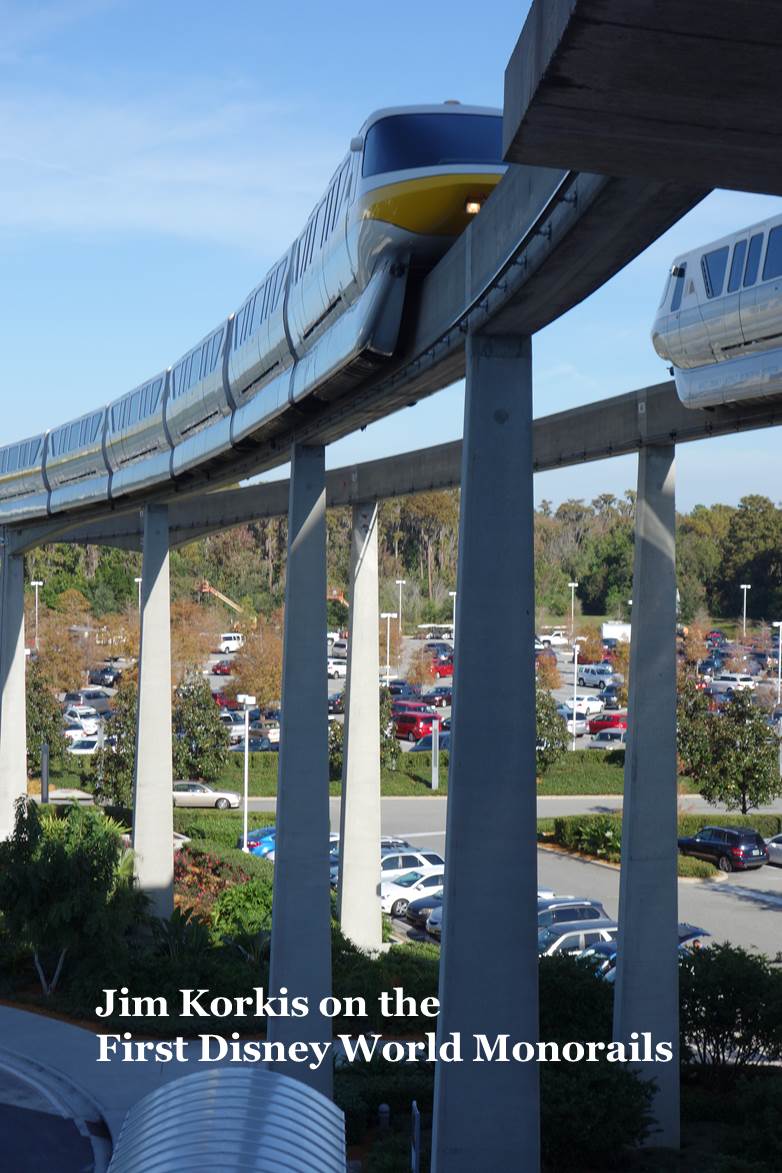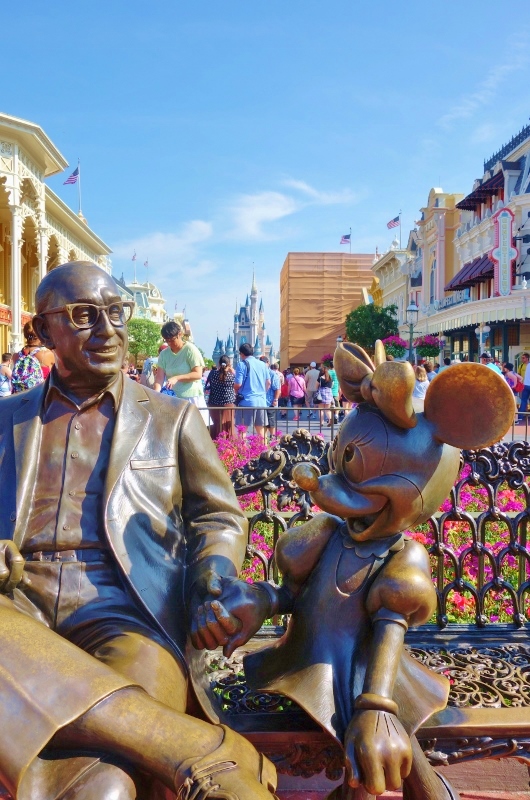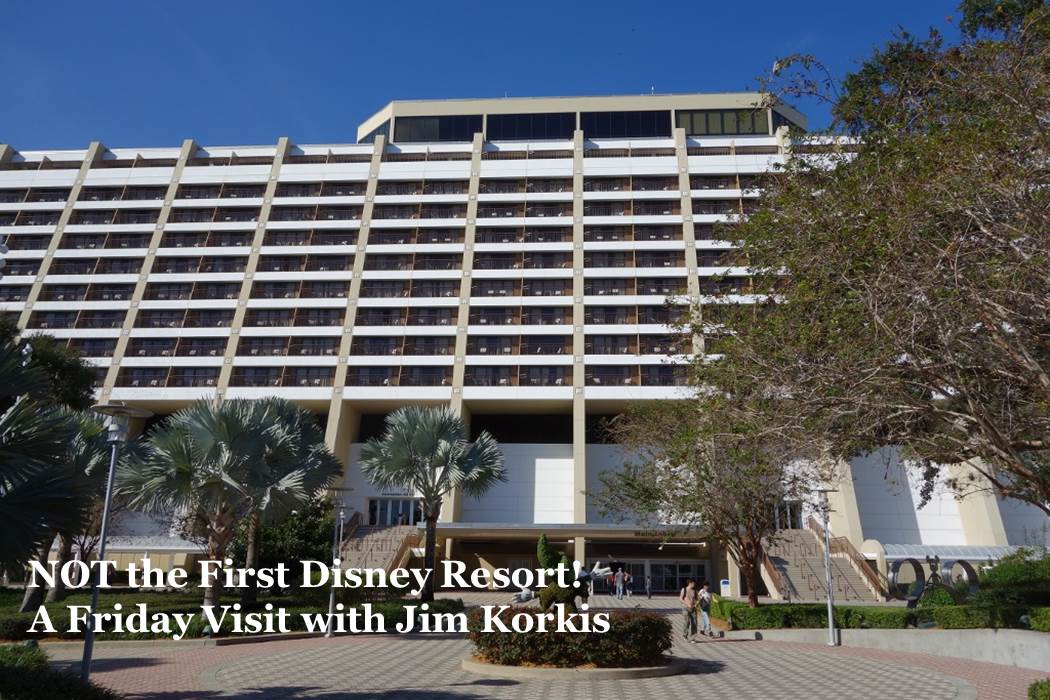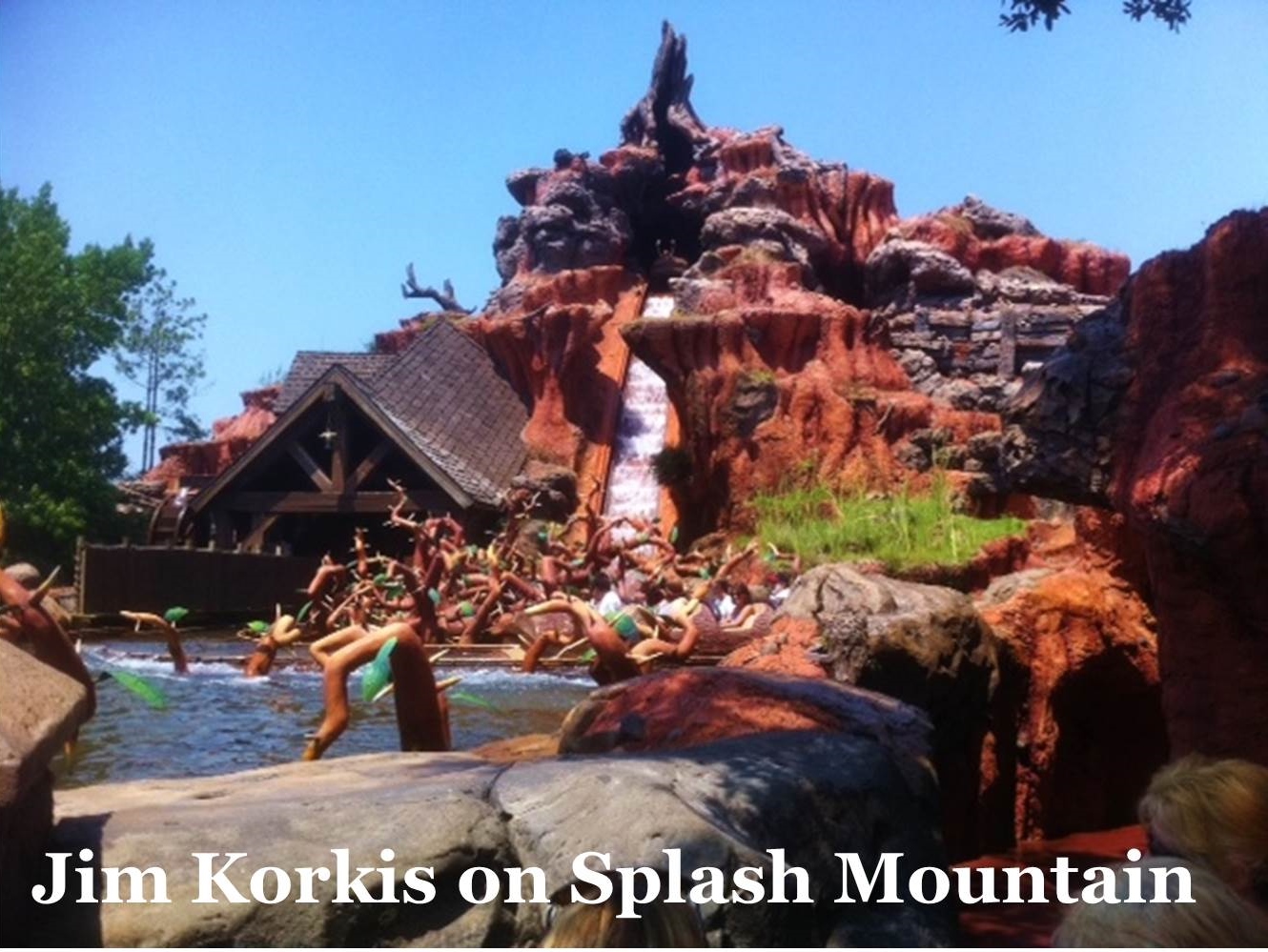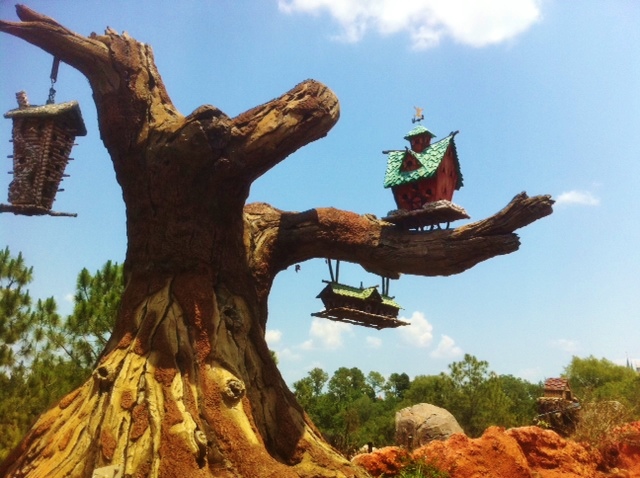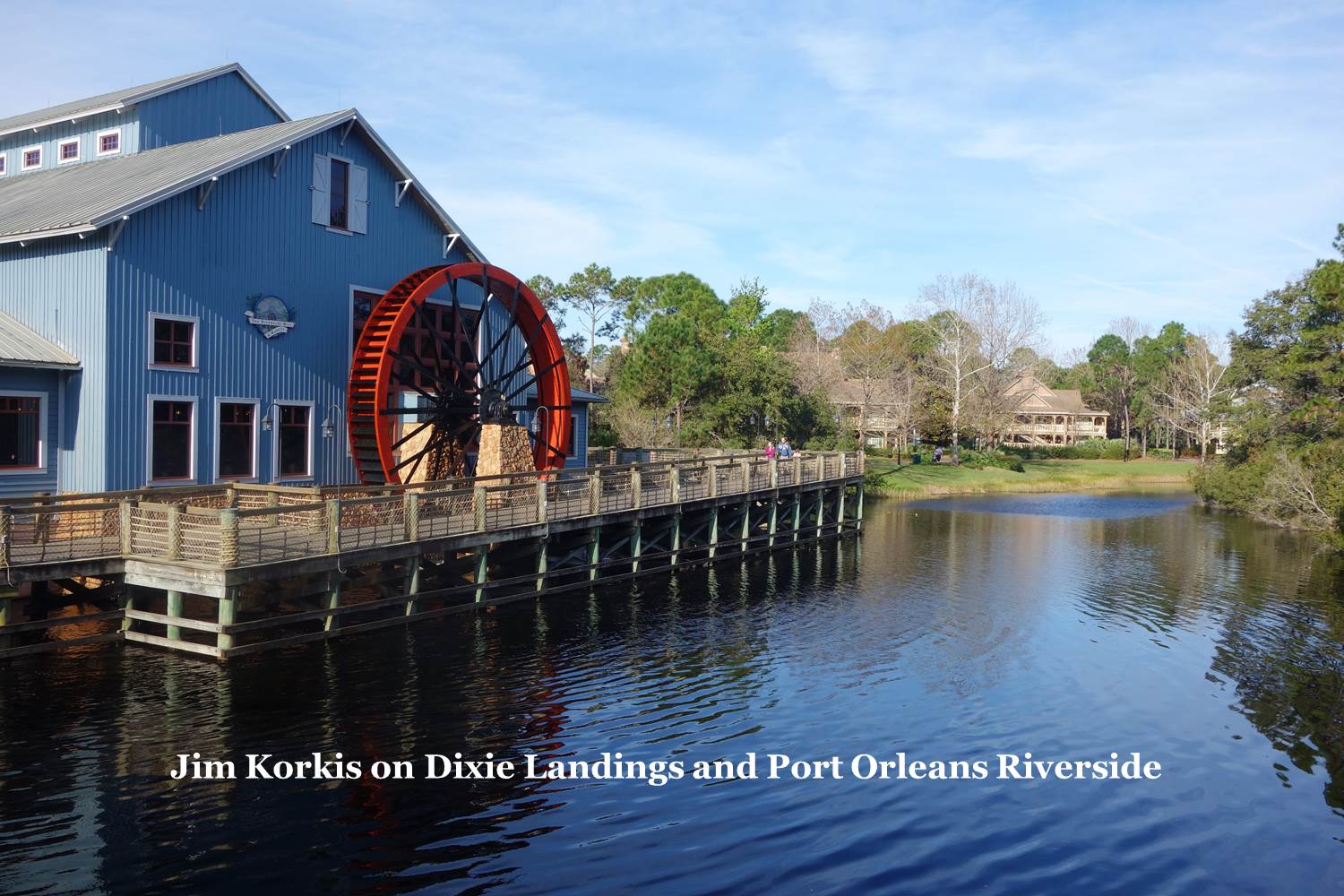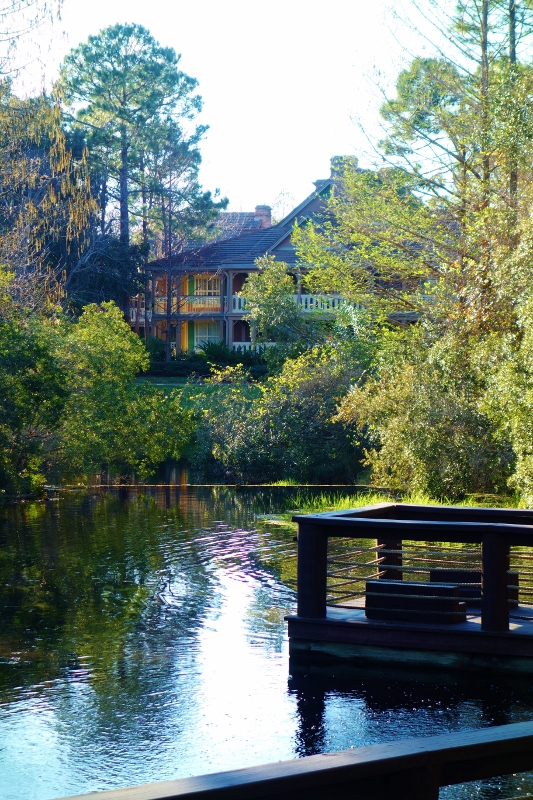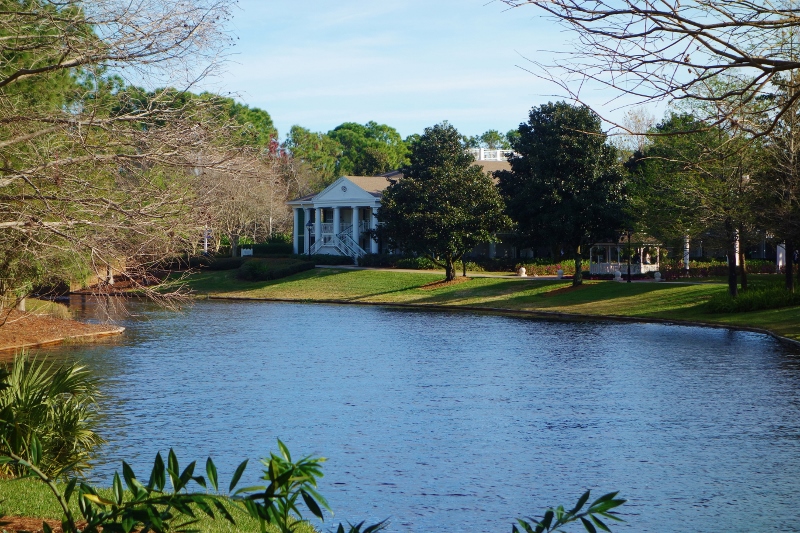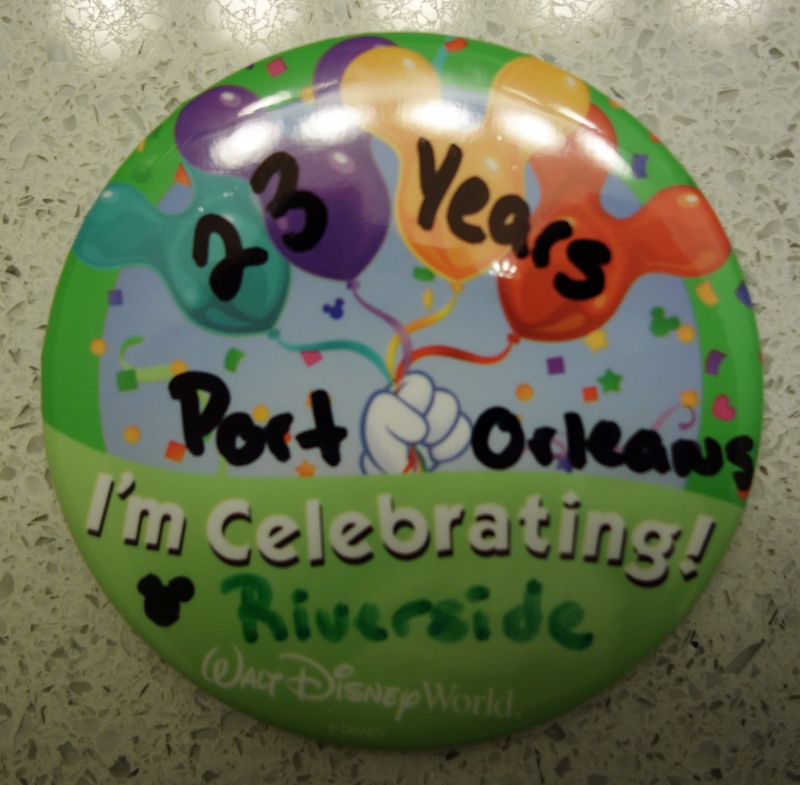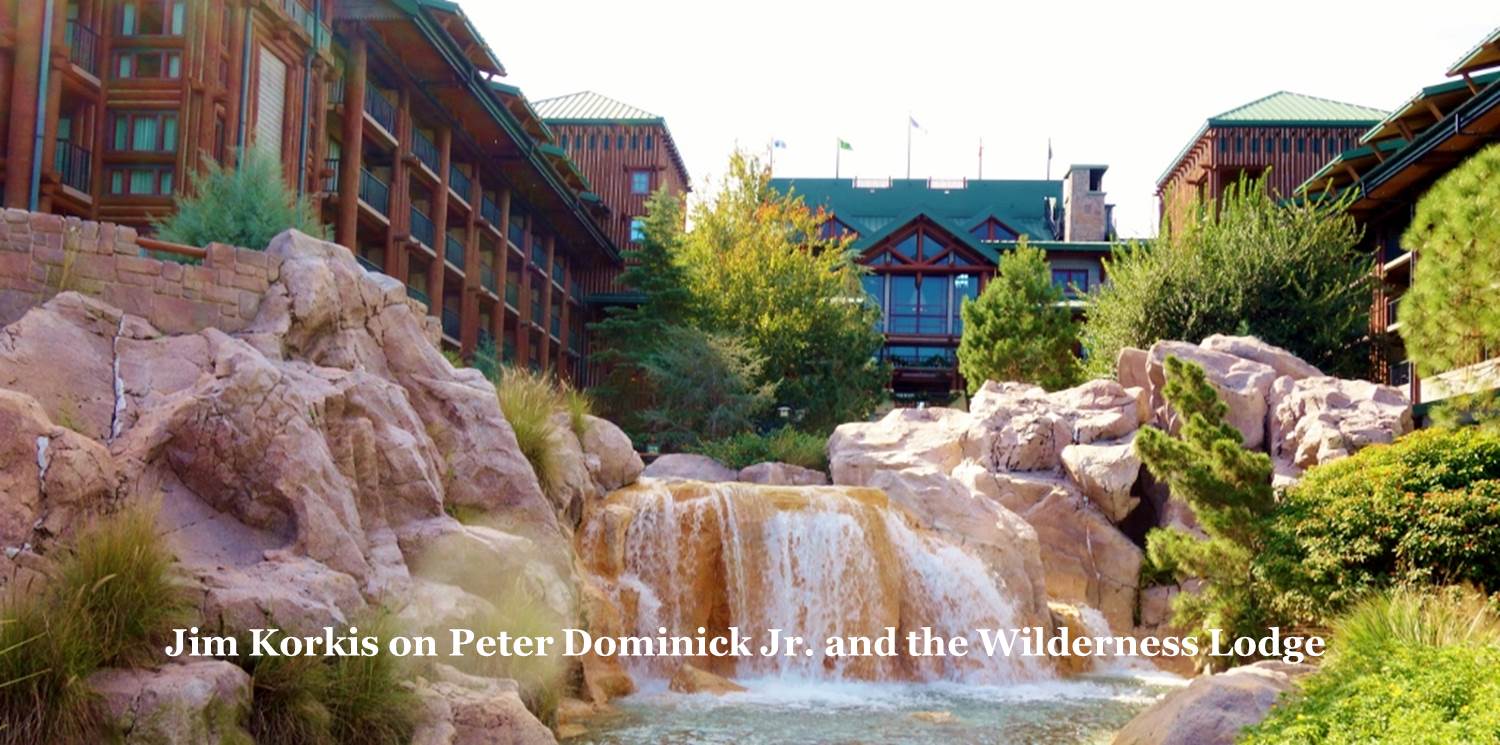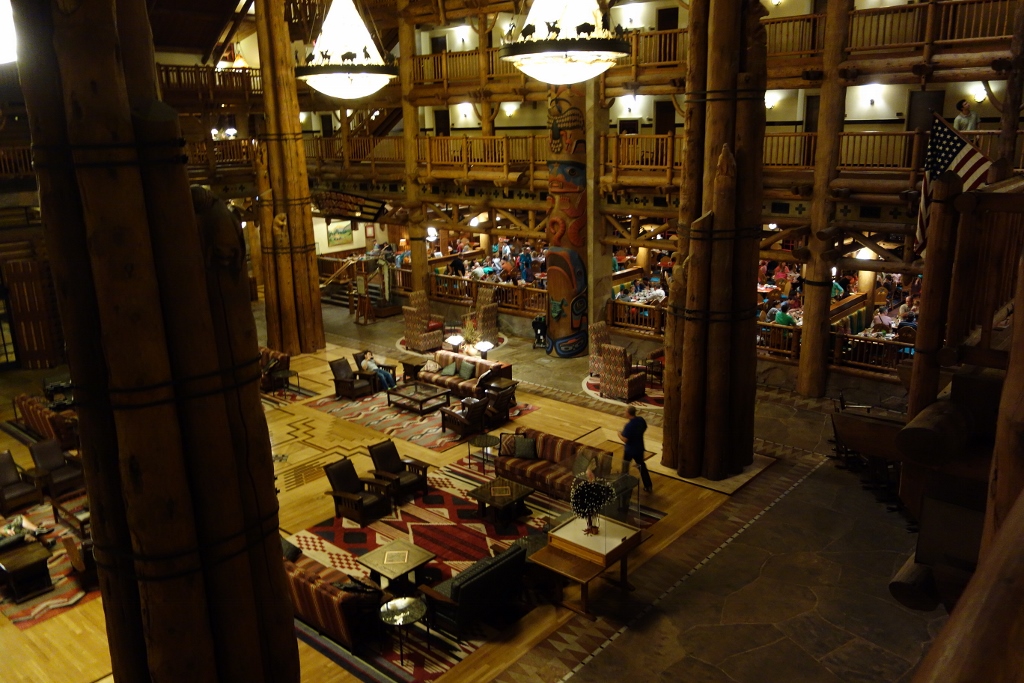Category — A Friday Visit with Jim Korkis
A Friday Visit With Jim Korkis: The First Disney World Monorials
Welcome back to Fridays with Jim Korkis! Jim, the dean of Disney historians and author of Jim’s Gems in The easy Guide, writes about Walt Disney World history every Friday on yourfirstvisit.net.
THE ORIGINAL WALT DISNEY WORLD MONORAILS
By Jim Korkis

According to Disney press information released in 1969 about the monorails at Walt Disney World:
“The principal means of travel from the parking center and main entrance to and from the theme park and hotels will be aboard the Walt Disney World-Alweg Monorail trains. Current plans call for the building of six five-car trains, some to stop at every hotel on the way around the circuit, while others carry passengers non-stop directly to the Magic Kingdom.”
Those newest monorails featured greater safety, comfort and efficiency than the ones operating at Disneyland at the time. They were dubbed the Mark IV and each one cost approximately six million dollars to build. The Mark IV had a high capacity design that could hold up to 210 guests in the five car train that was 171 feet long. There was improved air conditioning (considered vital in the Florida heat and humidity) and new door systems.
These newest monorails were designed in Burbank under the direction of Imagineer Bob Gurr and built in Orlando by the Martin Marietta Corporation.
The seats in the Mark IV were a rich royal blue with four aisles between guests facing each other going across each car. Each car had four doors, except for the middle car that had a special double door type of setup to allow guests in wheelchairs.
Just like for the trams today, back then there were waiting queue slots for guests that held roughly the number of people who could fit in the empty seats in each aisle to help control the boarding. There was no standing room capability.
At the Magic Kingdom during the early days, guests boarded the monorail by going up the middle ramp and exited the train by going down the side ramps. It is the reverse today because it proved to cause congestion when the park closed at night and guests flooded out of the Magic Kingdom to leave.
In theory, it all sounded smooth and seamless. Yet on Opening Day in October 1971, only three monorails were operating. A fourth would be brought on later that month and a fifth was being constructed. Even with light attendance, they were not enough to handle the guests clamoring to get to the park and spend their money.
Other forms of transportation were rushed into service, including six steam launches and other water craft including the Mike Fink keel boats from Frontierland. Half of the parking lot trams were needed to haul guests from the Ticket and Transportation Center to the Magic Kingdom and they frequently overheated and broke down on the incline near the Contemporary Resort.
Over the decades, additional improvements were made in the design and capacity of the monorails but guests were still awed by the originals when they debuted. Today, the improved Mark VI version of the monorail carries guests to their destinations at Walt Disney World.
* * * * *
Thanks, Jim! Come back next Friday for more from Jim Korkis.
In the meantime, check out his books, including The Vault of Walt, Who’s Afraid of the Song of the South?, and The Book of Mouse
, and his contributions to The easy Guide to Your First Walt Disney World Visit, all published by Theme Park Press.
MORE DISNEY WORLD HISTORY POSTS FROM JIM KORKIS
- “Summer Magic” on Main Street
- Muppets and Mama Melrose
- Peter Dominick and the Wilderness Lodge
- Dixie Landing and Port Orleans Riverside
- The History of Splash Mountain
- The First Disney World Hotel
- The “Sharing the Magic” Statue
- The First Disney World Monorails
- The Water Park River Country
- The Epcot Fountain
- The Fireplace at the Wilderness Lodge
- Sid Cahuenga at Disney’s Hollywood Studios
- Spaceship Earth
- Downtown Disney
- The Missing Resort Hotels
- Echo Park and Echo Lake
- Typhoon Lagoon
Follow yourfirstvisit.net on Facebook or Google+ or Twitter or Pinterest!!
May 1, 2015 No Comments
A Friday Visit With Jim Korkis: The “Sharing the Magic” Statue at the Magic Kingdom
Welcome back to Fridays with Jim Korkis! Jim, the dean of Disney historians and author of Jim’s Gems in The easy Guide, writes about Walt Disney World history every Friday on yourfirstvisit.net.
THE ROY O. DISNEY “SHARING THE MAGIC” STATUE
By Jim Korkis
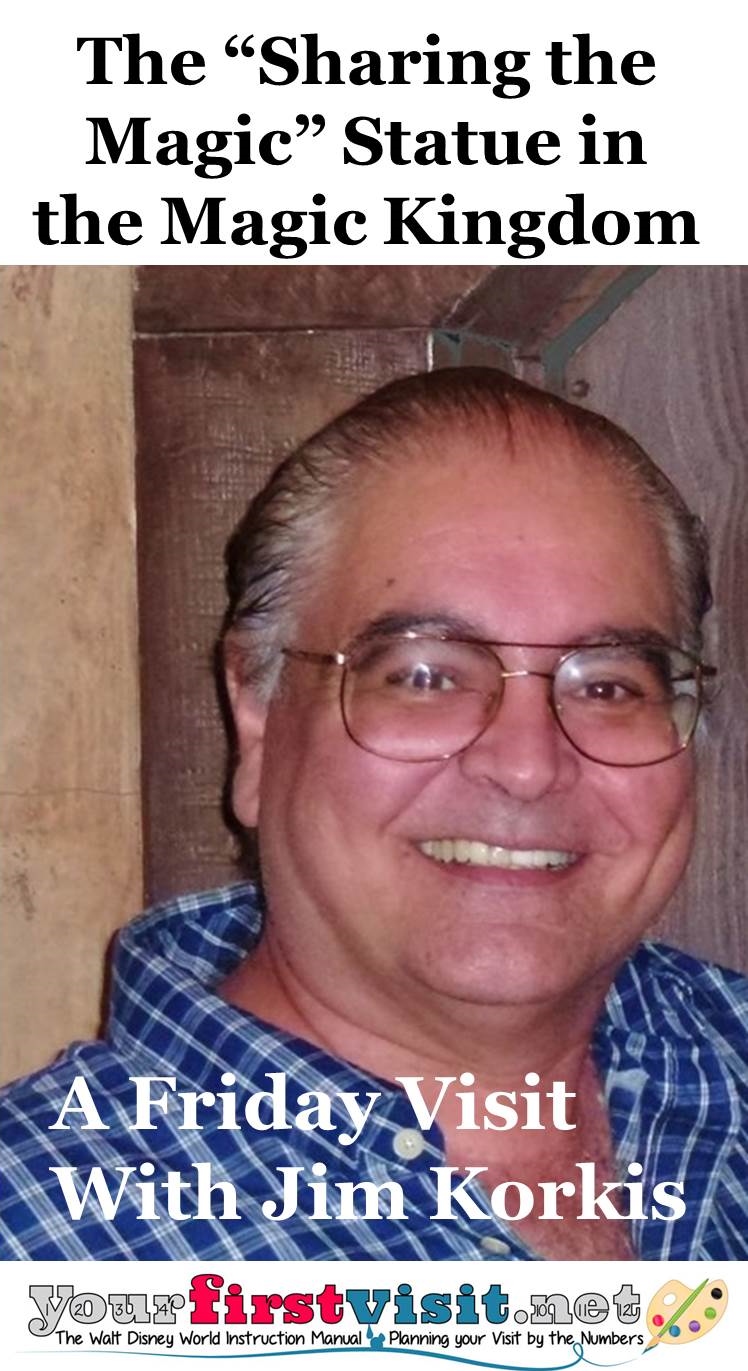
According the sculptor, Disney Legend Blaine Gibson, Walt is saying to Mickey, “Look at what we accomplished together. Look at all the happy people coming to visit us.”
But it’s not Gibson’s only statue of a Disney…
Gibson began his Disney career in 1939 as an apprentice animation artist. Walt Disney noticed Blaine’s interest and skill in sculpture and transferred him over to WED (Imagineering) to work on things for Disneyland.
Blaine ended up sculpting everything from Indian chiefs along the banks of the Rivers of America to bathing elephants on the Jungle Cruise. He sculpted President Lincoln (as well as all the presidents in the Hall of Presidents except for President Obama, who was done by a Gibson protégé), Haunted Mansion ghosts and blood-thirsty pirates in Pirates of the Caribbean.
Blaine became a Disney Legend in 1993, the same year the “Partners” statue debuted at Disneyland.
While Mickey truly was Walt’s partner, Walt also had a “silent partner” who once said, “My younger brother dreams of castles, but I am the one that has to get them built.”
A statue of Walt’s older brother, Roy O. Disney, seated on a park bench beside Minnie Mouse at the Magic Kingdom theme park in Florida, is located approximately where Roy stood when he dedicated the park in October 1971.
This statue was installed in October 1999 and was also the work of Blaine Gibson.
The statue of Roy is called “Sharing the Magic” and sits by the flagpole in Town Square across from the shadow of Roy’s name on the upper window of the confectionery shop.
“Roy is sitting back in the bench which indicates he was there first and Minnie came to him, not that he came up to her to ask why she was sitting down and not working,” laughed Blaine who based the pose on photographs taken of Roy in the park in October 1971 sitting on a bench with Disney costumed characters. “Also he is holding her hand underneath so he is supporting it, just like he always supported Walt’s dreams. Roy was very underrated.”
Originally, the statue was put behind a low fence but so many guests climbed over the fence for photographs that it was moved out of the fenced area.
A duplicate is located outside the Team Disney building at Disney’s corporate headquarters in Burbank, California. There is a third statue at the Tokyo Disneyland theme park.
Both the Partners and the Sharing the Magic statues are favorite photo locations at the Magic Kingdom today, as they continue to honor the two brothers who made a dream come true in a Florida swampland.
Gibson’s young assistant on both the “Partners” and “Sharing the Magic” statues was the very talented Rick Terry. Terry is the sculptor of the recent “Storytellers” statue of Walt and Mickey at Disney California Adventure.
Both Gibson and Imagineer Ray Spencer looked over his shoulder while Terry worked on this newest icon in the Disney theme parks.
* * * * *
Thanks, Jim! Come back next Friday for more from Jim Korkis.
In the meantime, check out his books, including The Vault of Walt, Who’s Afraid of the Song of the South?, and The Book of Mouse
, and his contributions to The easy Guide to Your First Walt Disney World Visit, all published by Theme Park Press.
MORE DISNEY WORLD HISTORY POSTS FROM JIM KORKIS
- “Summer Magic” on Main Street
- Muppets and Mama Melrose
- Peter Dominick and the Wilderness Lodge
- Dixie Landing and Port Orleans Riverside
- The History of Splash Mountain
- The First Disney World Hotel
- The “Sharing the Magic” Statue
- The First Disney World Monorails
- The Water Park River Country
- The Epcot Fountain
- The Fireplace at the Wilderness Lodge
- Sid Cahuenga at Disney’s Hollywood Studios
- Spaceship Earth
- Downtown Disney
- The Missing Resort Hotels
- Echo Park and Echo Lake
- Typhoon Lagoon
Follow yourfirstvisit.net on Facebook or Google+ or Twitter or Pinterest!!
April 24, 2015 No Comments
A Friday Visit With Jim Korkis: The First Disney World Hotel
Welcome back to Fridays with Jim Korkis! Jim, the dean of Disney historians and author of Jim’s Gems in The easy Guide, writes about Walt Disney World history every Friday on yourfirstvisit.net.
THE FIRST DISNEY WORLD RESORT HOTEL
By Jim Korkis
The first unofficial Walt Disney World resort was not on Walt Disney World property nor owned by the Disney Company.

The two story, horseshoe shaped hotel had 140 guest rooms and a covered pool as well as several meeting rooms. People called it “Finley’s Folly” but Hamilton was counting on it developing into a visible and accessible stop for visitors to Walt Disney World.
Hamilton and his partner paved the nearby dirt road. Hamilton wanted to call it “Hamilton Drive” but there was another street by that name in Orlando so he had to settle for “International Drive”.
The Contemporary and Polynesian originally were to be managed by third parties—the Contemporary by Marriott and the Polynesian by Western International.
When the Disney Company determined they would run the WDW resort hotels themselves, Disney executive John Curry was put in charge and he hired about a half dozen managers from Western International who were originally going to run the Polynesian.
Because the Hilton Inn South was so near Disney property, the Disney Company offered to manage it for Hamilton for sixteen months until Walt Disney World opened so they could use it to train their staff for the Contemporary and the Polynesian resorts.
Dan Darrow was brought in from the Sheraton as General Manager. Bill “Sully” Sullivan was assistant manager, whose job primarily was to teach the Disney way of doing things to the hotel people.
Although it had been open since 1968, the Hilton Inn South re-opened in May 1970 under Disney management.
Besides being a training site, it was also the location where Disney executives stayed, as well as Disney transfers who had not found a permanent home yet. It was also open to the general public.
Standards were extremely high because Roy O. Disney himself visited frequently and commented on flaws.
Oddly, as he was an attorney, Hamilton trusted the Disney Company and the running of the Hilton Inn South was just a “handshake” deal. Disney Archivist Dave Smith could find no copy of a lease agreement.
Hamilton claimed in a letter to Disney President Donn Tatum that he suffered an estimated loss of over $50,000 in revenue during the time Disney managed the hotel. Hamilton never collected nor sued because he felt that Disney would be a great source of business and he was in the process of building yet another hotel.
The Hilton Inn South no longer exists but it was originally in the same general area as the big McDonald’s and entrance to Quality Inn on Sand Lake Road.
Disney Archivist Dave Smith recalled, “to train the cast members who were going to manage our hotels, we leased the Hilton Inn South, on International Drive near Sand Lake Road. At least I assume it was a lease–I have never seen the actual documents. I stayed there on my first trip to Orlando, in June, 1971. They put up most of the traveling Disney executives there, but, of course, at that time there were few other choices nearby. I believe the building is still there, but it is no longer a Hilton.”
* * * * *
Thanks, Jim! Meet Jim (and me and Josh) April 20!
Come back next Friday for more from Jim Korkis.
In the meantime, check out his books, including The Vault of Walt, Who’s Afraid of the Song of the South?, and The Book of Mouse
, and his contributions to The easy Guide to Your First Walt Disney World Visit, all published by Theme Park Press.
MORE DISNEY WORLD HISTORY POSTS FROM JIM KORKIS
- “Summer Magic” on Main Street
- Muppets and Mama Melrose
- Peter Dominick and the Wilderness Lodge
- Dixie Landing and Port Orleans Riverside
- The History of Splash Mountain
- The First Disney World Hotel
- The “Sharing the Magic” Statue
- The First Disney World Monorails
- The Water Park River Country
- The Epcot Fountain
- The Fireplace at the Wilderness Lodge
- Sid Cahuenga at Disney’s Hollywood Studios
- Spaceship Earth
- Downtown Disney
- The Missing Resort Hotels
- Echo Park and Echo Lake
- Typhoon Lagoon
Follow yourfirstvisit.net on Facebook or Google+ or Twitter or Pinterest!!
April 17, 2015 2 Comments
A Friday Visit With Jim Korkis: The History of Splash Mountain
Welcome back to Fridays with Jim Korkis! Jim, the dean of Disney historians and author of Jim’s Gems in The easy Guide, writes about Walt Disney World history every Friday on yourfirstvisit.net.
THE HISTORY OF SPLASH MOUNTAIN

The Splash Mountain attraction in Disney World’s Magic Kingdom is very loosely based on some of the incidents in the animated sections of the still controversial Disney live action film “Song of the South” (1946).
In the ride, Brer Rabbit runs away from home and finds himself in more adventures than he intended.
He continually outwits Brer Fox and Brer Bear until he is trapped in honey (rather than the politically incorrect Tar Baby in the movie), and taken to Brer Fox’s lair to be eaten.
As in the movie, he convinces Brer Fox to toss him into the spiky Briar Patch where the plucky rabbit survives because he was born and bred in it so he is intimately familiar with it.
The grand finale of that water flume drop into the briar patch has the Oscar winning “Zip a Dee Doo Dah” song being sung by critters on a massive rocking showboat as Brer Rabbit re-discovers the comforts of the home he tried to abandon.
2014 marked the 25th anniversary of the Splash Mountain attraction. Splash Mountain opened at Disneyland on July 17, 1989 and exactly three years later on July 17, 1992 at Walt Disney World’s Magic Kingdom.
(Officially, the attraction was dedicated at Magic Kingdom on October 2, 1992 but was up and running as a “soft opening” for roughly over two months during that summer beginning July 17.)
The two versions share many similarities and a handful of differences.
At Walt Disney World, the project was supervised by Imagineer Eric Jacobson. For Disneyland, it had been created by Imagineers Tony Baxter along with Bruce Gordon and John D. Stone.
There had to be some significant exterior color changes to blend into the WDW Frontierland color scheme (rather than the reddish Georgia looking coloring at Disneyland) and the music has more of a country-western feeling with banjos and harmonicas.
There are significantly more audio-animatronics characters in the Disneyland version because they were rescued from the “America Sings” attraction. In Florida, there are fewer such figures because they were expensive to build.
The length of Magic Kingdom’s flume is 2,600 feet with four drops, while Disneyland is 2,640 feet with five drops.
However, at its core, the attraction is basically the same.
When new CEO Michael Eisner was given his first tour of Imagineering in 1984 where new projects could be pitched to him, Tony Baxter and the Splash Mountain model had been pushed into a back corner because there were so many other presentations championed by senior Imagineers.
Eisner brought along his fourteen year old son, Breck Eisner, who while his dad was being shown the projects that WDI had on its top agenda, wandered over to the Splash Mountain model. Toward the end of his tour, Eisner noticed his son in the back and came over and found that his son really liked the model.
Eisner decided that if his son was so intrigued that others of his demographic group would be as well, and gave the green light to the attraction.
Possible names proposed for the attraction included “Song of the South Log Flume Ride”, “Zip-a-Dee-Doo-Dah”, and “Zip-a-Dee River Run”.
At one point, Eisner looked at the model and said, “It’s a mountain…you have a big splash at the end…it’s Splash Mountain.”
* * * * *
Thanks, Jim! Come back next Friday for more from Jim Korkis.
In the meantime, check out his books, including The Vault of Walt, Who’s Afraid of the Song of the South?, and The Book of Mouse
, and his contributions to The easy Guide to Your First Walt Disney World Visit, all published by Theme Park Press.
MORE DISNEY WORLD HISTORY POSTS FROM JIM KORKIS
- “Summer Magic” on Main Street
- Muppets and Mama Melrose
- Peter Dominick and the Wilderness Lodge
- Dixie Landing and Port Orleans Riverside
- The History of Splash Mountain
- The First Disney World Hotel
- The “Sharing the Magic” Statue
- The First Disney World Monorails
- The Water Park River Country
- The Epcot Fountain
- The Fireplace at the Wilderness Lodge
- Sid Cahuenga at Disney’s Hollywood Studios
- Spaceship Earth
- Downtown Disney
- The Missing Resort Hotels
- Echo Park and Echo Lake
- Typhoon Lagoon
Follow yourfirstvisit.net on Facebook or Google+ or Twitter or Pinterest!!
April 10, 2015 No Comments
A Friday Visit With Jim Korkis: Dixie Landings and Port Orleans Riverside
Welcome back to Fridays with Jim Korkis! Jim, the dean of Disney historians and author of Jim’s Gems in The easy Guide, writes about Walt Disney World history every Friday on yourfirstvisit.net.
(A review of Disney’s Port Orleans Riverside Resort begins here.)
DIXIE LANDINGS AND PORT ORLEANS RIVERSIDE
By Jim Korkis
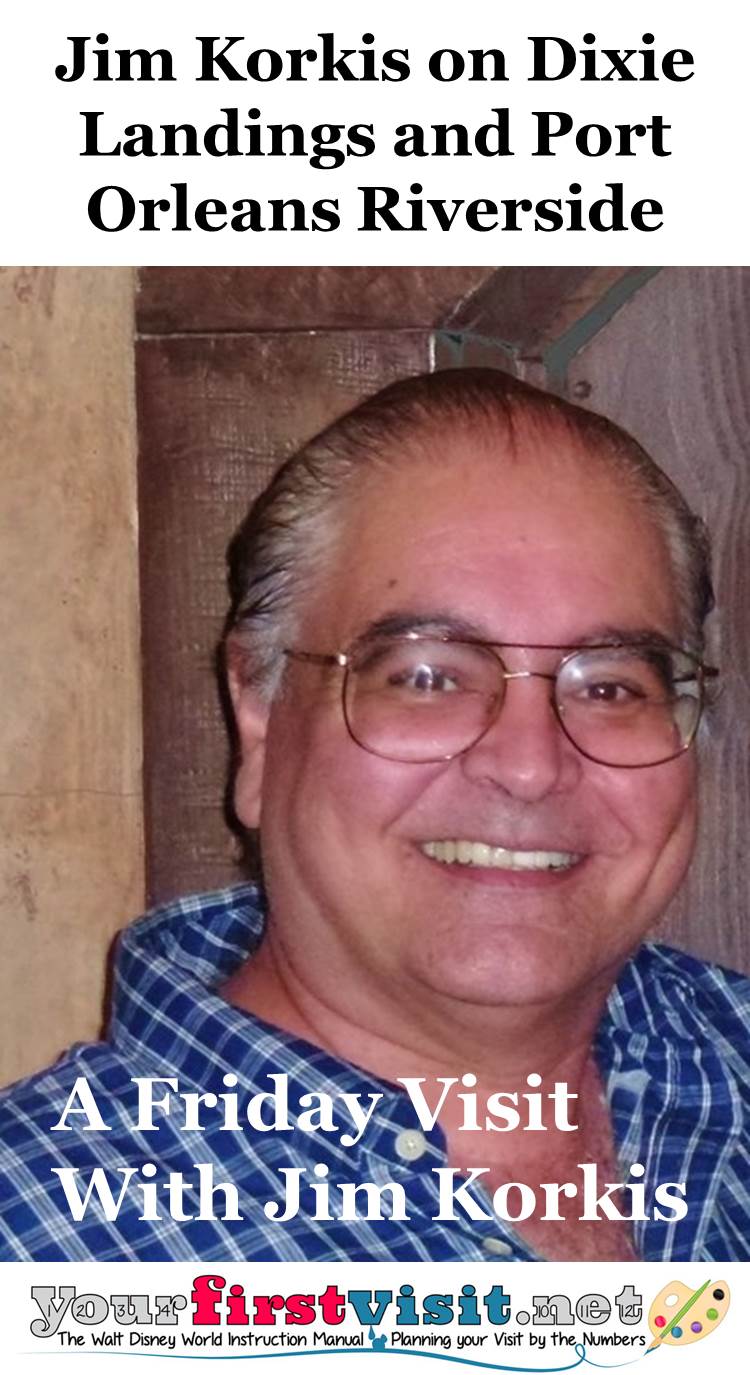
It was inspired by rural Louisiana and nestled alongside the picturesque Sassagoula River (using the Native American term for the Mississippi).
In 2001, to try to eliminate the negative connotations associated with the Old South, including a cotton mill that suggested the slavery of the pre-Civil War era as well as the word “Dixie” itself, the resort was formally merged into Disney’s Port Orleans resort to become Port Orleans Riverside.
(The old Port Orleans resort was then renamed Port Orleans French Quarter.)
Riverside is divided into two distinctly themed parishes: the stately white-columned Magnolia Bend “mansions” reminiscent of the Old South and the quaint backwoods “cottages” of Alligator Bayou themed after Cajun Country.
When it first opened, Disney’s Port Orleans Resort had a faux newspaper called “The Sassagoula Sentinel” referring to the man-made river that flowed outside. When Dixie Landings opened about a year later, it also had a newspaper, “The Sassagoula Times” (supposedly originally printed in 1893 and costing five cents, but given free to guests).
These newspapers detailed guest information but were also filled with stories that were a mixture of authentic history mixed with fanciful but logical additions from Walt Disney Imagineering.
Today, resort guests receive a generic “Directory of Services and Resort Map”, a small pocket sized pamphlet containing just the basic service information but no background story or fun facts.
According to stories in the original issue of “The Sassagoula Times”, Dixie Landings was founded by a pair of brothers from Port Orleans. Colonel J.C. Peace and his brother Everette came upriver to make their own home away from the hustle and bustle of the city.
Everette, the recluse of the family who often spent days on end whittling small carvings with a remarkable degree of detail, settled on a remote island in 1835 in the heart of what later became known as Alligator Bayou, to live the life of a hermit. Legends arose about this Old Man Island and its odd inhabitant.
Everette’s younger brother, Jonathon, who was an honorary colonel like Colonel Sanders of KFC fame, was much more outgoing.
He constructed a stately home known as Acadian House. Neighbors would pay visits on one another regularly, the cotton trade brought numerous business guests, and steamboats along the vital Sassagoula accounted for a steady stream of visitors from across the country.
Before long, a community of stately Southern mansions arose in this tranquil part of the Sassagoula, called Magnolia Bend.
Over the years, Jonathon had heard tall tales of the mysterious Old Man living on Old Man Island but dismissed them as legend. One day, his granddaughter, Susie, came running to him with a beautifully carved wooden bird in her hand. She told stories of the funny old man who gave it to her as a gift.
Turning over the rustic artistic treasure, he could barely make out the tiny letters carved into the base: “Everette Peace, 1857”.
Immediately, the Colonel made his way out to the island loudly shouting his older brother’s name. The two embraced warmly. Despite Jonathon’s offer to come live with him, Everette had no desire to leave his little island. Jonathon continued to visit his brother many nights there to reminisce until their deaths.
* * * * *
Thanks, Jim! Meet Jim (and me and Josh) April 20! And for more on Disney’s Port Orleans Riverside Resort and its theming, see this.
I happened to be staying at Port Orleans Riverside in February on its 23rd birthday, and a cast member gave me this button!
Come back next Friday for more from Jim Korkis! In the meantime, check out his books, including The Vault of Walt, Who’s Afraid of the Song of the South?, and The Book of Mouse
, and his contributions to The easy Guide to Your First Walt Disney World Visit, all published by Theme Park Press.
MORE DISNEY WORLD HISTORY POSTS FROM JIM KORKIS
- “Summer Magic” on Main Street
- Muppets and Mama Melrose
- Peter Dominick and the Wilderness Lodge
- Dixie Landing and Port Orleans Riverside
- The History of Splash Mountain
- The First Disney World Hotel
- The “Sharing the Magic” Statue
- The First Disney World Monorails
- The Water Park River Country
- The Epcot Fountain
- The Fireplace at the Wilderness Lodge
- Sid Cahuenga at Disney’s Hollywood Studios
- Spaceship Earth
- Downtown Disney
- The Missing Resort Hotels
- Echo Park and Echo Lake
- Typhoon Lagoon
Follow yourfirstvisit.net on Facebook or Google+ or Twitter or Pinterest!!
April 3, 2015 1 Comment
A Friday Visit With Jim Korkis: Peter Dominick, Jr. and the Wilderness Lodge
Welcome back to Fridays with Jim Korkis! Jim, the dean of Disney historians and author of Jim’s Gems in The easy Guide, writes about Walt Disney World history every Friday on yourfirstvisit.net.
PETER DOMINICK JR. AND THE WILDERNESS LODGE
By Jim Korkis

Most of their contributions are anonymous, a tradition started by Walt Disney himself in order to reinforce the “Disney” brand.
However, during the era of former Disney CEO Michael Eisner, noted architects were recruited and publicized.
They expanded the vision of Walt Disney World and were given prominent recognition in all the publicity associated with their buildings.
“In our architecture, Disney continues to produce the kind of groundbreaking entertainment that keeps the Disney name magical to people around the world. Our architecture is part of the show,” said Eisner in August 1992 at the ground-breaking ceremony for Disney’s Wilderness Lodge resort.
Peter Dominick Jr., who headed the Urban Design Group of Denver, Colorado and was an avid outdoorsman, had been commissioned to design the upscale Wilderness Lodge resort near the Magic Kingdom.
Dominick was well known for having a great passion and understanding of the building traditions of the Rocky Mountain West.
As part of their research for the Disney resort, Dominick and members of the Disney Development Company visited lodges at Yosemite, Yellowstone and Glacier National Parks.
Dominick’s primary inspirations for the Wilderness Lodge were clearly the Old Faithful Inn at Yellowstone Natural Park and the Awahwanee Lodge in Yosemite National Park that are referenced in the final design.
“(Disney’s Wilderness Lodge) does, in fact, capture the spirit and sense of place one associates with our National Parks, icons of our American heritage …with their art, architecture and dramatic landscapes,” stated Dominick.
“There are romantic and endearing qualities associated with the early national parks movement—the Northwest, the Native Americans, the great lodges. All of these elements have been combined in wonderful detail, creating a unique wilderness experience.”
Dominick was inspired by Stephen Mather, the first director of the National Park Service, who insisted on using whatever building materials were indigenous to an area in building a hotel so that it blends all aspects together and becomes more organic to the setting.
This style was known as “rustic architecture”. The concept was that art, architecture and landscape should be fully integrated in the design and construction of the building.
Dominick set out to create a log hotel from the early 1900s in the Northwest Rockies incorporating authentic Native American elements, natural lightning and wherever possible traditional building materials like natural limestone.
Eighty-five loads of lodgepole pines were harvested from “standing dead forests” (meaning the trees had been killed from a natural cause, like insects) in Oregon and Montana to build the resort. No living trees were chopped down to create the lodgepoles. Stretched end to end, they would be forty miles long.
The wood floor in the lobby is composed of Brazilian cherry, white oak, bird’s eye maple, and burl walnut.
Only the rockwork is fabricated, using gunite. Real rocks were used to create molds for cement that was later spray painted to look like granite or sandstone. So don’t take it for “granite”.
Dominick’s work on the Wilderness Lodge was so well received by guests and critics that he went on to also design the Animal Kingdom Lodge at WDW and The Grand Californian in Anaheim for the Disney Company. Dominick passed away at the age of 67 in 2009.
* * * * *
Thanks, Jim! And for more on Disney’s Wilderness Lodge and its theming, see this.
Come back next Friday for more from Jim Korkis! In the meantime, check out his books, including The Vault of Walt, Who’s Afraid of the Song of the South?, and The Book of Mouse
, and his contributions to The easy Guide to Your First Walt Disney World Visit, all published by Theme Park Press.
MORE DISNEY WORLD HISTORY POSTS FROM JIM KORKIS
- “Summer Magic” on Main Street
- Muppets and Mama Melrose
- Peter Dominick and the Wilderness Lodge
- Dixie Landing and Port Orleans Riverside
- The History of Splash Mountain
- The First Disney World Hotel
- The “Sharing the Magic” Statue
- The First Disney World Monorails
- The Water Park River Country
- The Epcot Fountain
- The Fireplace at the Wilderness Lodge
- Sid Cahuenga at Disney’s Hollywood Studios
- Spaceship Earth
- Downtown Disney
- The Missing Resort Hotels
- Echo Park and Echo Lake
- Typhoon Lagoon
Follow yourfirstvisit.net on Facebook or Google+ or Twitter or Pinterest!!
March 27, 2015 No Comments

